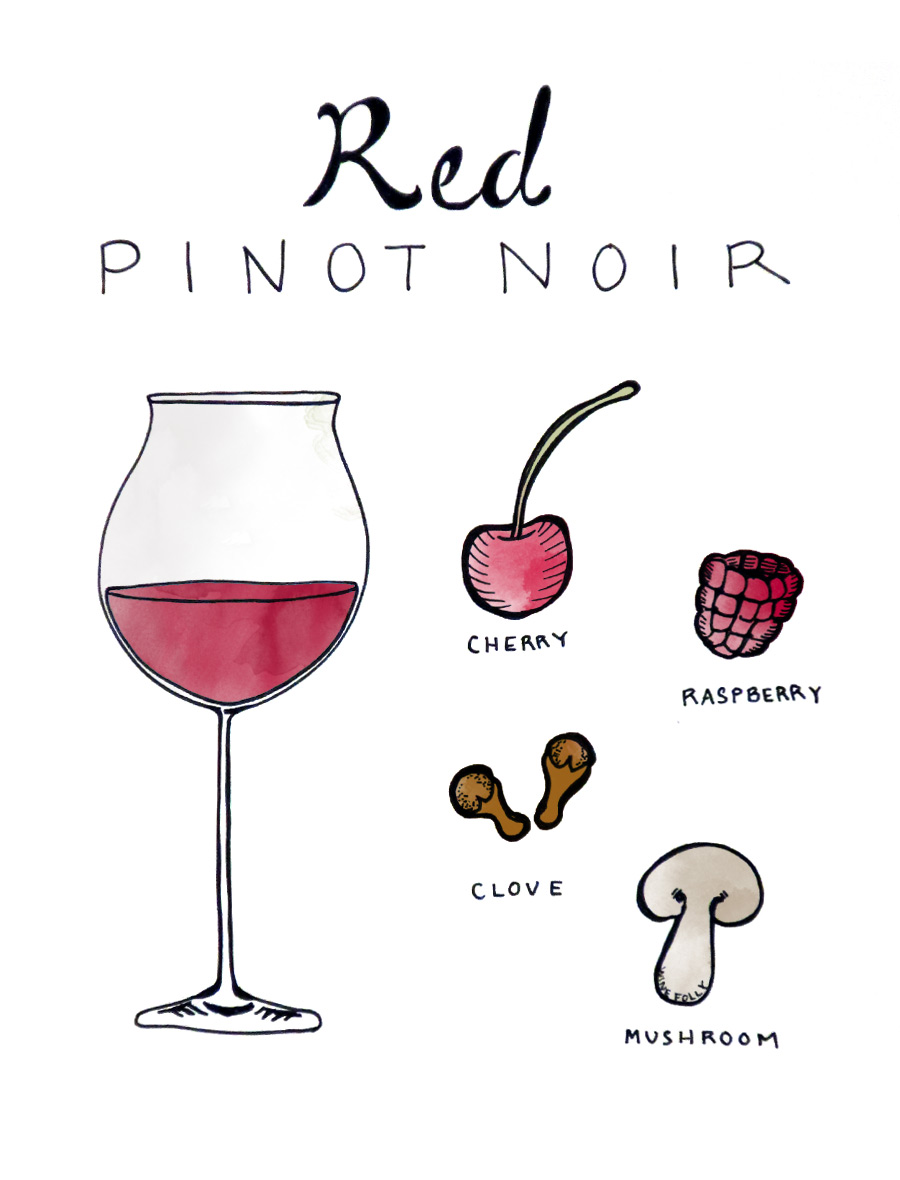Pinot Noir is often hailed for being utterly delicious, but it also happens to be one of the most versatile wine grapes in the world. This single red grape variety can be transformed to create not just red wine, but white, rosé, and sparkling wine as well. How on earth is this possible? It all comes down to the winemaking methods and the production processes that determine this little grape’s fate.
White Pinot Noir
If you were to cut open a Pinot Noir grape, you’d see that the flesh (the pulpy part) is actually a pale greenish yellow color. It’s actually the skins of the grapes that dye the juice a beautiful red hue, so if you want to produce a white wine with red grapes – the skins have got to be removed ASAP. This is the secret to white Pinot Noir (aka “Vin Gris”)
Of course, the red skins of grapes start dying the juice really quickly so winemakers work extra fast, usually opting to harvest on a cool morning and get the grapes to the cellar and pressed as fast as possible. The wine press used to make white Pinot Noir is a special pneumatic press (this style of press is used for white wine making) which crushes the grapes but filters off the skins and seeds. The remaining juice typically has a lovely, deep golden color.
Red Pinot Noir
Red Pinot Noir uses the red winemaking process.
Grapes are collected and put into grape crushers which drop the entire contents of the crusher into a tank (skins, seeds, pulp, and all!). Because Pinot Noir is such a thin-skinned variety, it often gets extended time with its skins (before and after wine making), in order to soak up as much of the red pigment as possible. In case you were wondering, these two processes are cold-soaking (before fermentation) and extended maceration (after fermentation). Some winemakers will even add the Pinot Noir stems into the fermentation to increase color extraction (it adds some bitterness but you get a whole lot more color and age-worthiness too!). After this whole process is done, you have a wine with a pale to medium ruby red color.
Rosé Pinot Noir
Making Rosé is all about timing. The longer the skins are in the juice, the darker they dye the wine.
For Pinot Noir, this process looks a little like a combination of red and white winemaking. The grapes get crushed into a tank with the skins and seeds. Then the juice is monitored by the winemaker who takes samples every hour or so to check the color extraction. The moment she thinks the color is perfect, the winemaker strains the juice from the skins into clean tanks where the wine completes its fermentation. I’ve spoken with winemakers in both California and Oregon who say they’ve made rosé wines with less than 7 hours of “skin contact” time!
Sparkling Pinot Noir aka Blanc de Noirs
Start with white Pinot Noir and then ferment it again to make blanc de noirs.
This is the specialty of Champagne, including Jay-Z’s brand, Armand de Brignac, whose “tete de cuvée” is a special edition bottling of 100% Pinot Noir in a Blanc de Noirs style. To make sparkling wine, you essentially take a specially formulated wine (using perfectly underripe grapes that produce more acidity) and ferment it again in bottles so that the carbon dioxide can’t escape and it pressurizes the bottle, carbonating the wine. You can find Blanc de Noirs made all over the world, and almost always, Pinot Noir is the grape used for this wine (the other is a Pinot variant called Pinot Meunier).

How Sparkling Wine is Made
Learn about the different methods used to create sparkling wine.
View Post
Other Versatile Red Grapes
You might be wondering what other wines can be made in all 4 styles and you might have noticed how I mentioned that Pinot Noir has thin skins. As it happens, some of the best red grapes for producing white, rosé, red, and sparkling styles have thinner skins too. This is because the skins generally have less pigment and thus, take longer to dye the wine. Here are a few other grapes with thin skins that show great potential to be made in all four styles:
- Gamay
- Grenache
- Zinfandel
- Nebbiolo
- Mencía
- Sangiovese







